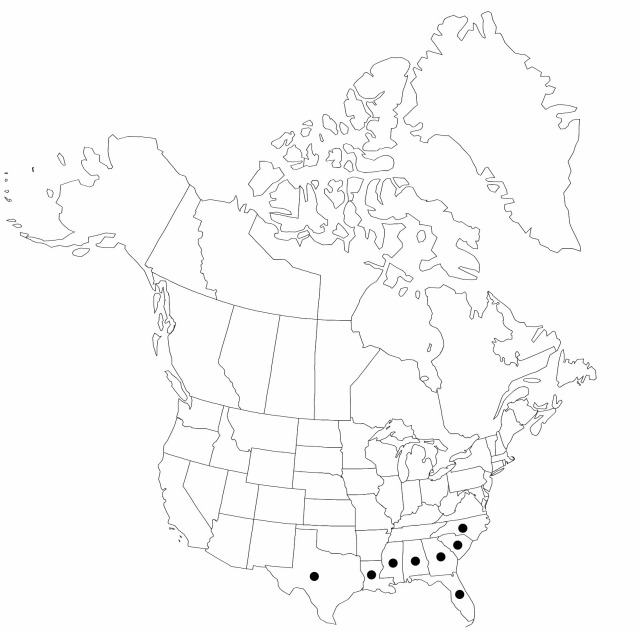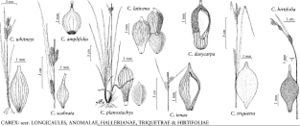Difference between revisions of "Carex tenax"
Amer. J. Sci. Arts, ser. 2, 19: 254. 1855.
imported>Volume Importer |
imported>Volume Importer |
||
| Line 52: | Line 52: | ||
|publication year=1855 | |publication year=1855 | ||
|special status=Illustrated;Endemic | |special status=Illustrated;Endemic | ||
| − | |source xml=https:// | + | |source xml=https://bitbucket.org/aafc-mbb/fna-data-curation/src/2e0870ddd59836b60bcf96646a41e87ea5a5943a/coarse_grained_fna_xml/V23/V23_906.xml |
|genus=Carex | |genus=Carex | ||
|section=Carex sect. Hallerianae | |section=Carex sect. Hallerianae | ||
Latest revision as of 20:43, 5 November 2020
Plants loosely cespitose; rhizomes stout. Culms 20–50 cm, smooth, glabrous. Leaf blades V-shaped in cross section when young, 1.5–2.8 mm wide, usually involute, proximally puberulent. Inflorescences: proximal bracts sheathless or sheath not more than 2(–5) mm; lateral spikes 10–20 × 5–9 mm, all in distal 1/2 of stem; terminal spike 10–32 × 1.5–3 mm. Pistillate scales 3–5-veined, ovate, 2.8–5 × 1.6–2.2 mm, proximal ones shorter than perigynia, apex acute. Staminate scales 3-veined, 4.5–5.5 × 1.6–2.2 mm. Perigynia 20–30-veined, subsessile, ovoid to obovoid, 4–6 × 1.9–2.4 mm, pilose, hairs not more than 0.2 mm; beak distinct or obscure, to 0.5 mm. Achenes sessile, 3–3.5 × 1.9–2 mm, almost filling bodies of perigynia.
Phenology: Fruiting late spring–summer.
Habitat: Dry to dry-mesic, longleaf pine and sand-hill savannas
Elevation: 0–200 m
Distribution

Ala., Fla., Ga., La., Miss., N.C., S.C., Tex.
Discussion
Selected References
None.
